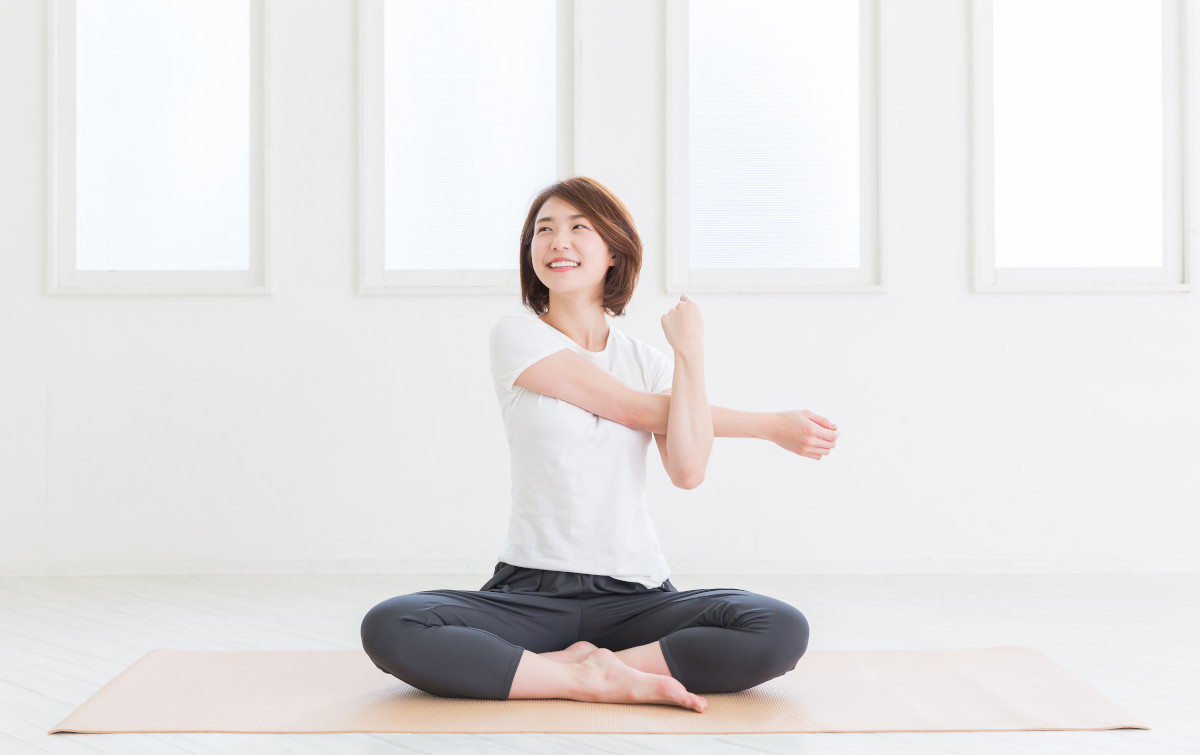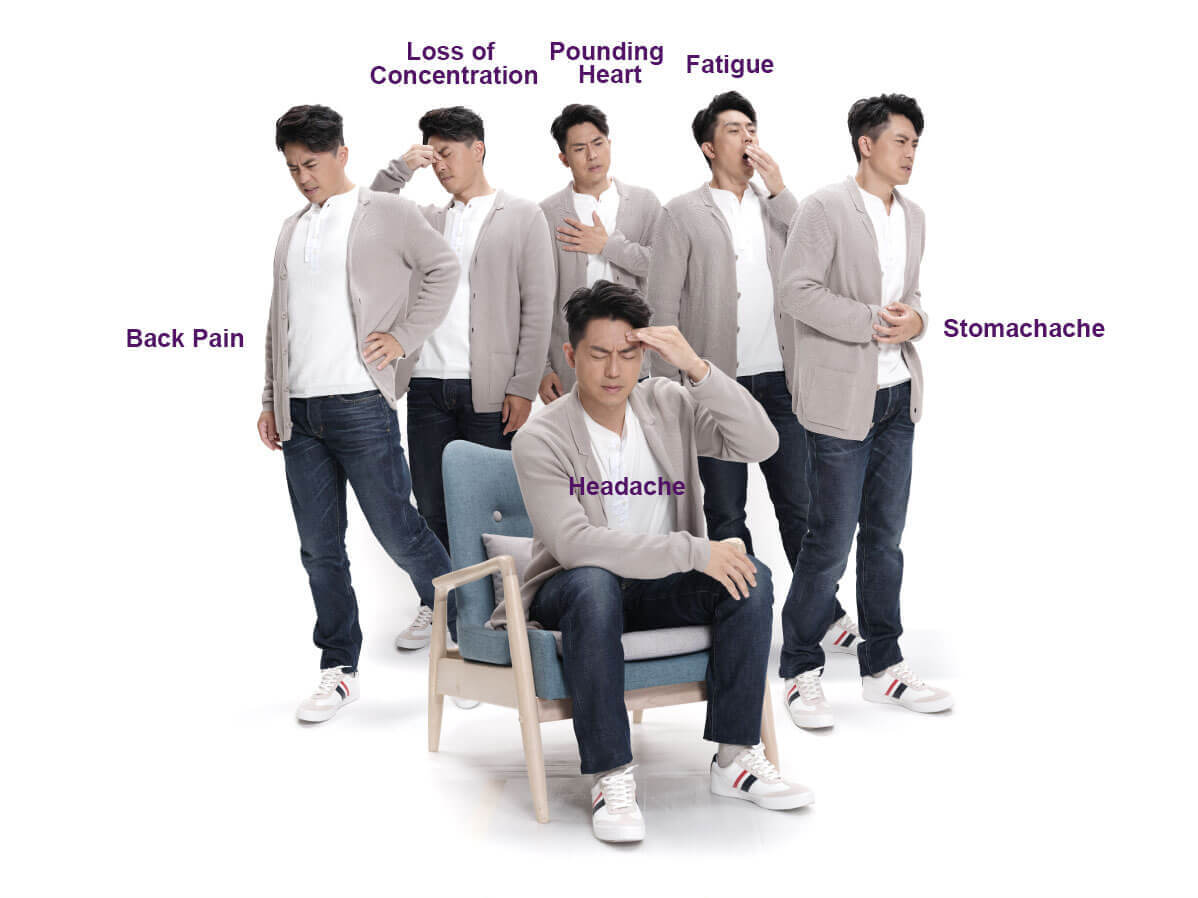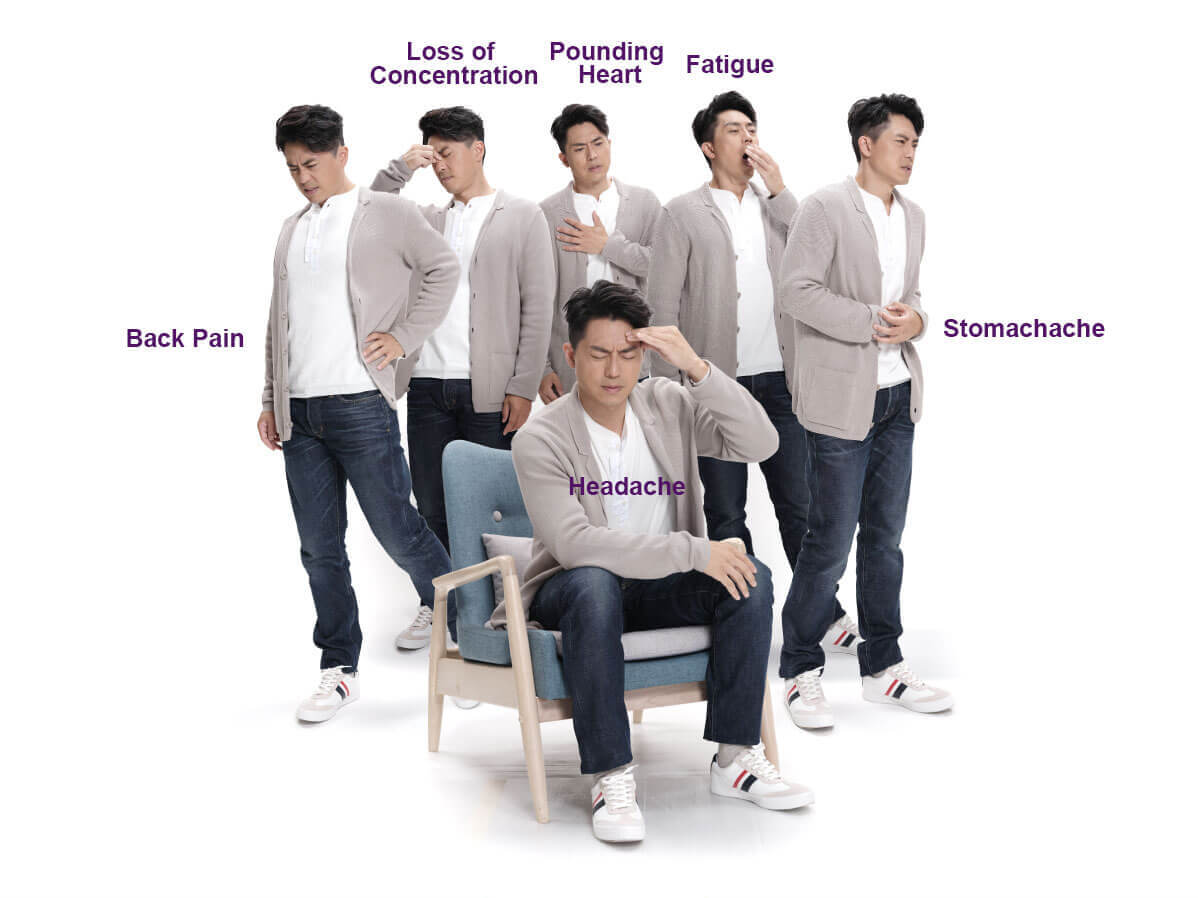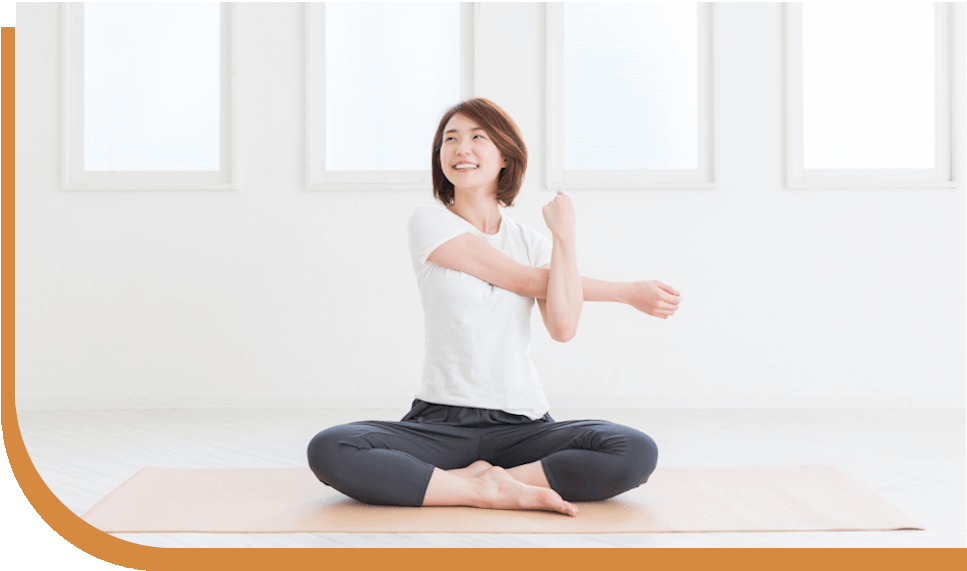- Improved sleep
- Increased interest in sex
- Better endurance
- Stress relief
- Improvement in mood
- Increased energy and stamina
- Reduced tiredness
- Weight control
- Reduced cholesterol and improved cardiovascular fitness



If you suspect you might be suffering from emotional distress, please do not hesitate to seek professional help as soon as possible. Apart from visiting a doctor, some changes in daily life habits may help to improve emotion management and to maintain mental health, including:


A study analyzed the incident rate of clinical emotional distress in different regions. The results showed that adherence to a Mediterranean dietary plan helped to reduce the risk of mood problems.4 The typical Mediterranean dietary plan consists of lots of vegetables, fruits, nuts, whole grains and olive oils, a moderate intake of milk or dairy products, and a low intake of meat. This provides a large amount of fiber, unsaturated fatty acid, different antioxidants, and micronutrients to supplement the nutritional requirements of the body and diminish the risk of various diseases.5,6

In addition to promoting overall health, boosting self-confidence and improving cognitive functions, regular exercise also enhances neural activity in several regions of the brain which control motivation and mood. This physiological effect is believed to be mediated by the amygdala (region of the brain that generates fear in response to stress) and the hippocampus (region of the brain that controls memory formation, mood and motivation), thereby reducing anxiety and emotional distress.
A 30-minute exercise at least three times a week can bring various health benefits,7 such as:



Mindfulness practice is similar to meditation which helps patients to break the cycle of obsessing on negativity.9,10 It emphasizes being present in the moment and the acceptance of emotions, thoughts, and body sensations. This practice is not religious and does not rely on professional techniques or medical equipment, making it a suitable option for self-practice at home. A local study of patients with mild emotional distress revealed that regular mindfulness practice appeared to alleviate symptoms of mood problems and reduce the risk of mood worsening.10
Simple breathing exercises can ease stress and make you feel less anxious. Breathing techniques are suitable for everyone and can be carried out on a daily basis.


References
PP-PRQ-HKG-0388 JUN 2023
Pristiq® is a prescription only medication. The effectiveness and side effects to medication may vary among individuals. Please consult your doctor or your pharmacist for more information.
How to report adverse events of Pfizer products?
Patient safety is of paramount importance throughout the life cycle of a medicine - and pharmaceutical companies have ethical and regulatory responsibilities to monitor the safety of the products they sell for as long as they are used by consumers anywhere in the world. The Drug Safety Unit at Pfizer Corporation Hong Kong Ltd address product experience reports including adverse events. If you have any experience pertinent to the above, please contact us at +852 28119711 as soon as possible.
Our colleagues at Medical Information are glad to help you understand more about our products. If you have any medical information-related questions (other than pricing, ordering, purchasing), please e-mail our Medical Information Services.
Email: [email protected]
Address: 21/F, Kerry Centre, 683 King's Road, North Point, Hong Kong.
Tel: (852) 2811 9711
Fax: (852) 2579 0599
Website: www.pfizer.com.hk
PP-PRQ-HKG-0283 AUG 2022